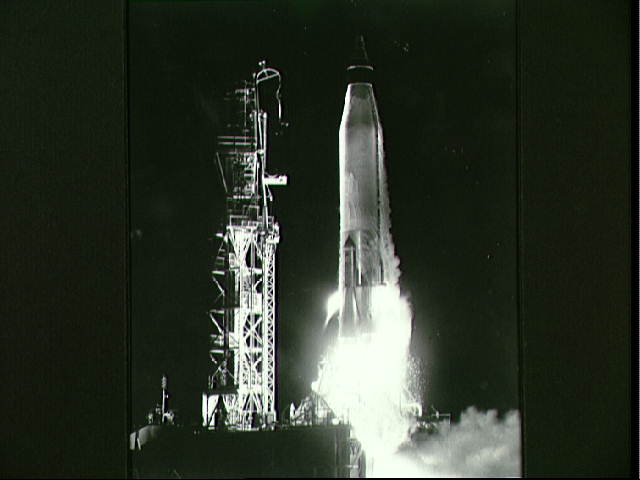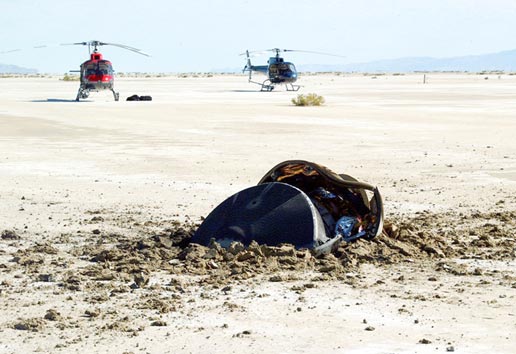Fifty years ago today — September 9, 1959 — the Mercury capsule test “Big Joe 1” launched from Cape Canaveral on an Atlas rocket. The booster operated nominally but its two outboard engines didn’t separate as planned, which left the payload 500 miles short of the predicted impact point; the overall test flight was still considered a success.

(Big Joe launch vehicle. Click to enlarge. USAF photo from the Johnson Space Center image collection.)
And fifteen years ago today, in 1994, Richard N. Richards, L. Blaine Hammond, Jr., Jerry M. Linenger, Susan J. Helms, Carl J. Meade, and Mark C. Lee launched from the Kennedy Space Center aboard Space Shuttle Discovery on mission STS-64.

(STS-64 mission patch, from NASA.)
The STS-64 mission was the first flight of the LIDAR (i.e., light detection and ranging, like radar but with lasers instead of radio) In-Space Technology Experiment, or “LITE.” Astronauts Lee and Meade accomplished the first untethered U.S. space walk in 10 years.



 by
by 
















